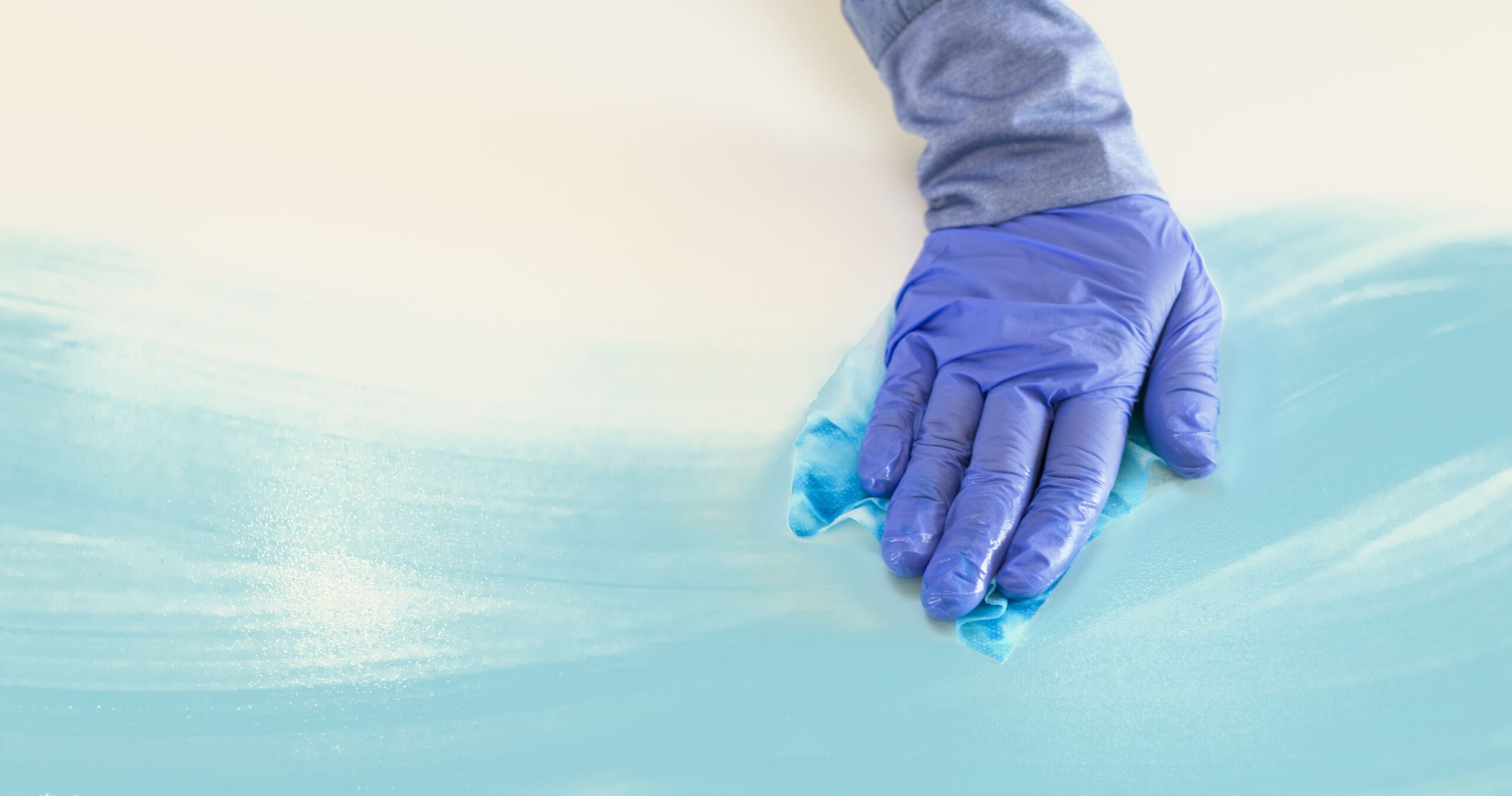Kinnos — a Brooklyn-based startup reimagining the way hospitals disinfect their surfaces by colorizing the process — raised $15 million in financing on Tuesday.
The company provides a blue additive for hospitals to use with their disinfectant products — the color provides a visual clue to give healthcare workers a more accurate picture of where they have cleaned. The company hopes that its products will reduce hospital-acquired infections, a nagging problem that affects patients and has financial ramifications for hospitals as well.

With the Rise of AI, What IP Disputes in Healthcare Are Likely to Emerge?
Munck Wilson Mandala Partner Greg Howison shared his perspective on some of the legal ramifications around AI, IP, connected devices and the data they generate, in response to emailed questions.
In addition to the fundraising news, Kinnos also announced that it has welcomed a new CEO, Steve Fanning. He comes to the startup from dental supplies provider Henry Schein, where he led its endodontics and restorative businesses. Before that, he spent two decades in leadership roles at Johnson & Johnson and Danaher.
Fanning explained that Kinnos’ product is a “colorized additive to disinfectant that does not change the efficacy of the disinfectant.” To explain this, he used the analogy of a printer and an ink cartridge.
“The way that we have it set up right now is that you take the lid off of a canister of wipes. You put our lid on top of it, and then you put the additive — the blue dye cartridge — into that lid. You press a button, it comes up, you feed it through, you close the lid. The wipe will come out, and as the wipe comes out, the dye gets added to it just like ink would get added to a piece of paper as it comes out of a printer,” Fanning explained.
When a healthcare worker uses a wipe that has been colorized by Kinnos, they see that the surfaces they disinfected have turned blue. The color typically fades within a couple minutes.
The $15 million it raised Tuesday comes from investors such as Pioneer Healthcare Partners, Kapor Center and Partnership Fund for NYC. The financing round brings Kinnos’ total funding to date to “a bit north of $20 million,” said Jason Kang, the company’s co-founder and chief innovation officer, in a recent interview.
The startup was founded in 2015, when Kang was an undergraduate at Columbia University. The idea came when he and two of his classmates, Katherine Jin and Kevin Tyan, were participating in a Columbia-hosted hackathon focused on mitigating the Ebola outbreak.
“The company was actually born out of an urgent need in West Africa, where healthcare workers and frontline staff couldn’t really see where they were disinfecting on surfaces and they were missing too many spots. That’s really where the idea of colorized disinfection came from,” Kang explained.
During Kinnos’ early years, the company had a focus on global health. It was primarily funded by government grants and deployed its product in Liberia, Guinea, Uganda, Haiti and the Democratic Republic of the Congo. But in the last couple years, Kinnos has shifted its focus to North American hospitals — where there is also “an urgent need for patient safety,” Kang pointed out.
Research shows that less than half of high-touch surfaces in healthcare settings are adequately disinfected, and this problem often leads to hospital-acquired infections, he said. CDC data demonstrates that hospital-acquired infections affect one out of every 31 patients, cause 72,000 deaths, and lead to billions in direct costs every year. The overall economic burden hospitals face due to these infections ranges from $28-45 billion, according to research from the National Institutes of Health.
Kinnos’ mission is to decrease these infections and “empower people with peace of mind through disinfection they can see,” Kang declared. He explained that Kinnos’ product is not a disinfectant, but rather an enhancement to commercially available products that are already out there.
“That’s something that’s really interesting about our business model —a lot of times, new disinfectants have a hard time getting into healthcare because they’re competing against incumbents. But we’re sort of more like Switzerland because we work across these different brands,” he said.
Still, Kinnos has to compete with other emerging disinfectant technologies, such as UV lights, foggers and misters.
These methods may have gained attention during the pandemic, but they don’t “replace the need for good old fashioned elbow grease,” Kang asserted.
“You have to use friction to remove dirt, food, blood, biofilm or whatever is there on the surface. We’re one of the only technologies out there that actually provides that real-time quality control to ensure that you’re getting everything you’re supposed to,” he declared.
Health systems are already starting to recognize the value of peace of mind when it comes to disinfecting their facilities. For example, Fraser Health, one of the largest health systems in Canada, is a Kinnos customer. In addition, the startup recently published a study in the American Journal of Infection Control detailing how Hackensack Meridian Health used its product to improve its cleaning processes.
Photos: Kinnos

















